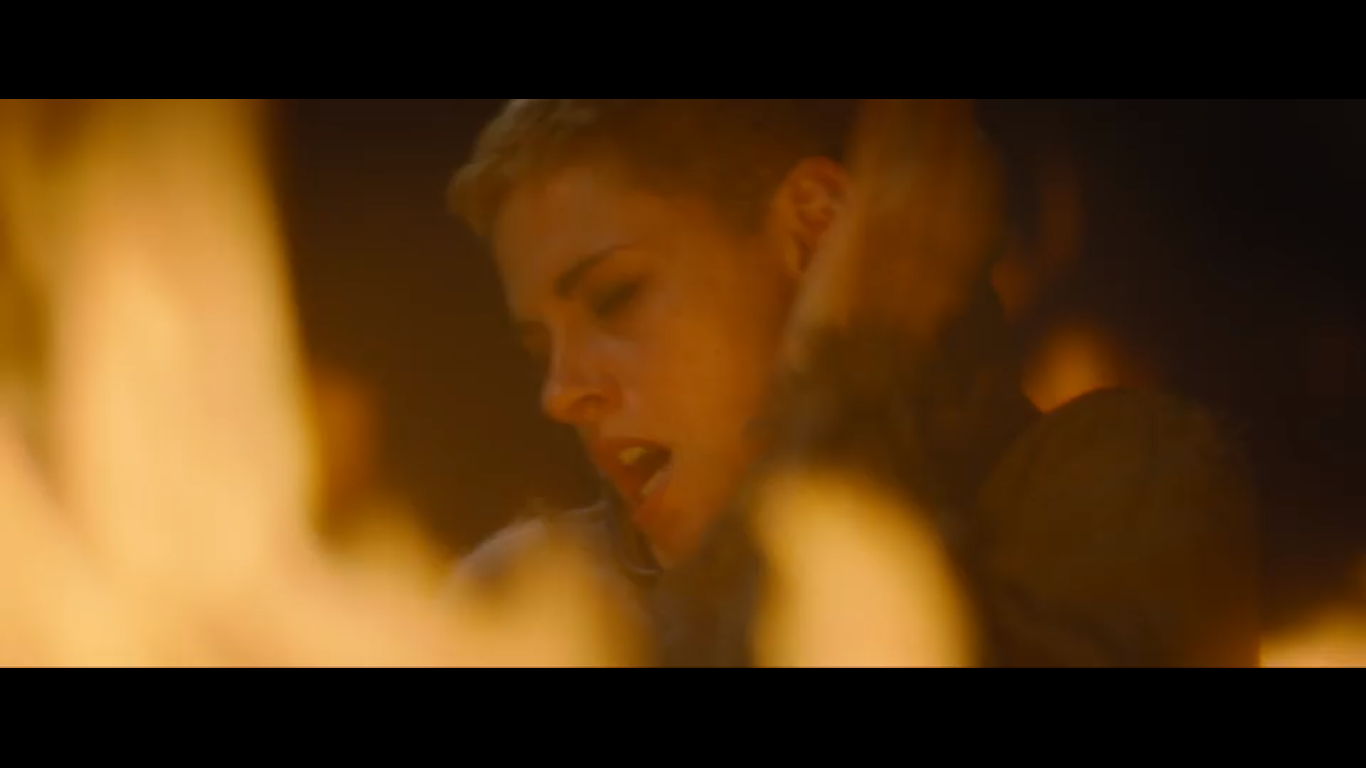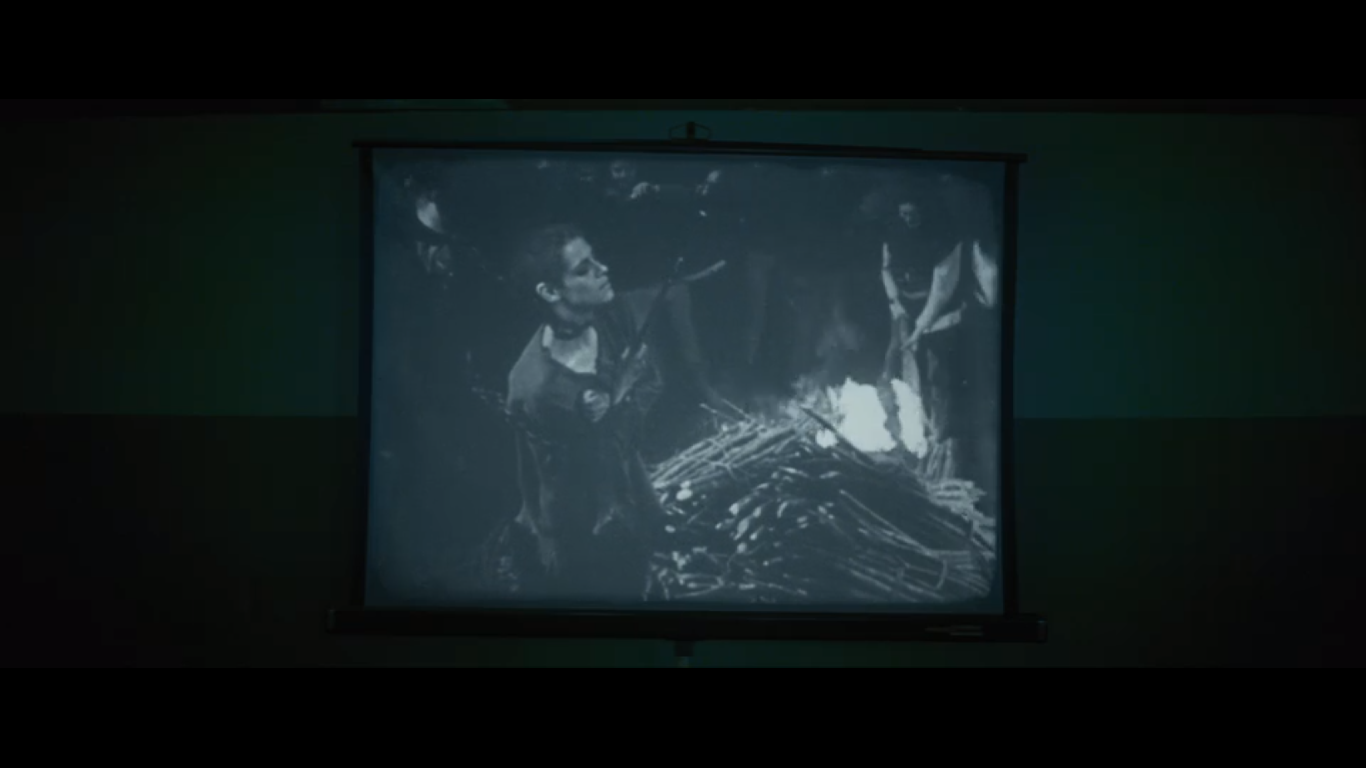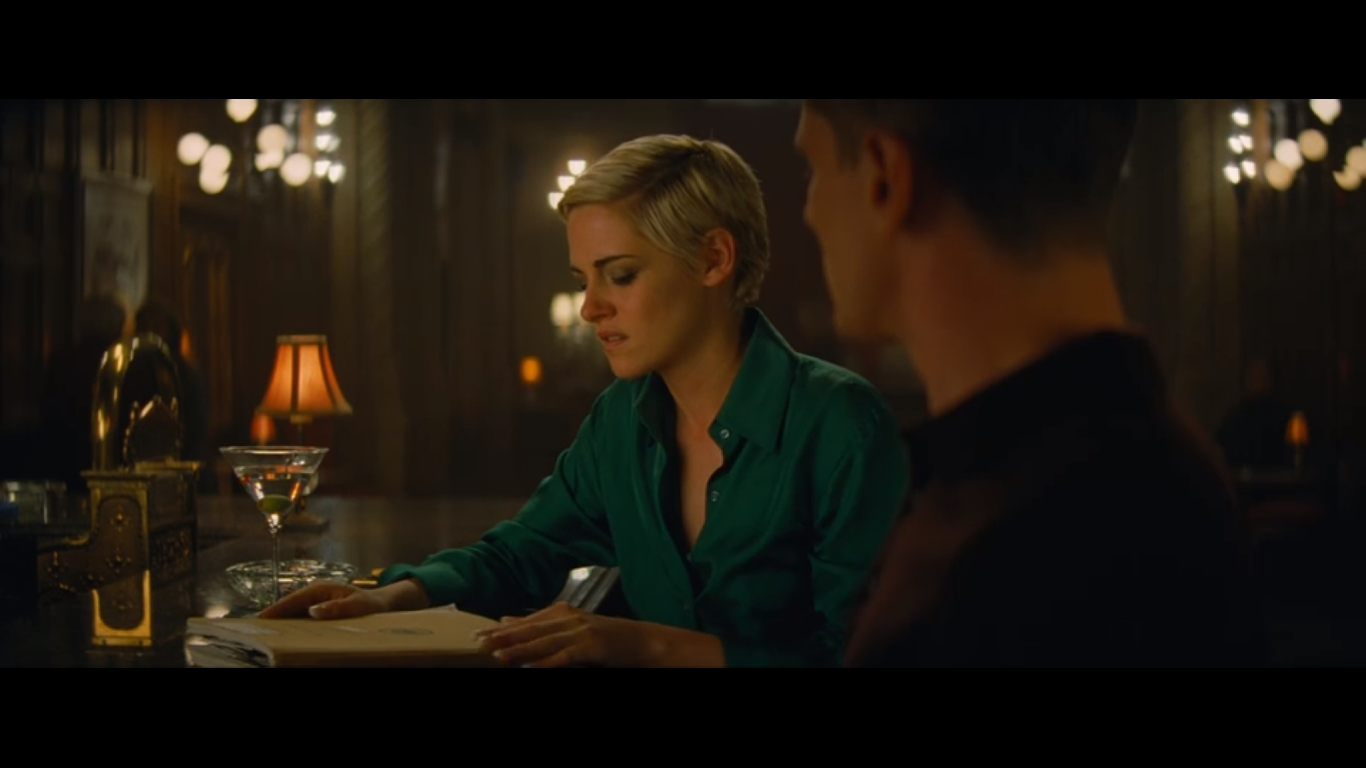
The narrative of the film alternates between the lives of Jean Seberg and Jack Solomon, the fictional FBI agent assigned to watch her for signs of involvement in the Black Panther Movement. While the focus on Solomon’s story at times seemed to overshadow Seberg’s storyline, the life Kristen Stewart brings to the character keeps her the central focus of the dramatic events of the film. The addition of a male character who shares the spotlight with Seberg is a choice that could have undermined the impact of her story. However, instead of shifting the focus from Seberg the parallel storylines highlight the disparity between the way that female and male characters are portrayed.
Solomon watches a wider, high angle part of this scene later in the film right before he pins her picture up on a wall of other people the FBI is watching. This places him in the position of the one sentencing her and watching while she burns.
The way the parallel stories are crosscut together makes their personal and professional lives to be directly compared to each other. We see a lot of Solomon’s home life with his expectant wife. Their solid relationship is sometimes strained by the secrecy of his work, but she supports him when she sees he is struggling with the moral dilemmas of his job. This contrasts with Seberg who is shown to have a loving husband and son, and then not long after starts an affair with Black Panther leader Hakim Jamal. This affair ends up drastically affecting the lives of her, Jamal, and their spouses.
While she uses her professional life to promote equality and civil rights, he uses his professional life to bring her to a state of paranoia and depression. It is her personal life that gives the government the means to undermine Jamal and what he stands for by spreading rumors about the affair. This opens up an interesting idea of double standards for morality.
Can someone stand for a good cause while also making wrong personal choices? While Seberg’s public acts to support the civil rights movement are shown as positive, it is the negative personal decisions that are scrutinized and used to sabotage the Black Panthers. When the news of the affair is leaked by the government agents who were spying on her, the spouses were unable to see past the affair to the good she was doing for the movement.
Conversely to this was the wholesome nature of Solomon’s relationship with his wife. They are supportive and in love. But he performs his job of invading Seberg’s privacy to the extent that she is unable to function properly because she is terrified that someone is always watching or listening. This juxtaposition of two very different lives that are entwined in such a twisted way makes a comparison that finds both of the characters wanting and leaves the audience with the question of which crimes will they excuse.
The film ends with Seberg in a relatively stable place after calling out the rumors of the illegitimate pregnancy as false and the reason she miscarried. She takes control of her life back by seeing the information they had on her and letting Solomon walk away from her. The title cards that come up after the film is over tell us that even though the government surveillance program was disbanded and Seberg kept supporting the Black Panther movement, in 1979 she was found dead in her car after having gone missing for ten days. Her death was ruled a suicide. The control that she lost during the whole episode was never fully regained.
Seberg’s story isn’t an inspirational one with a neat Hollywood ending. It is an illustration of what people can do out of fear when a strong woman stands up for what she believes in.




 RSS Feed
RSS Feed
